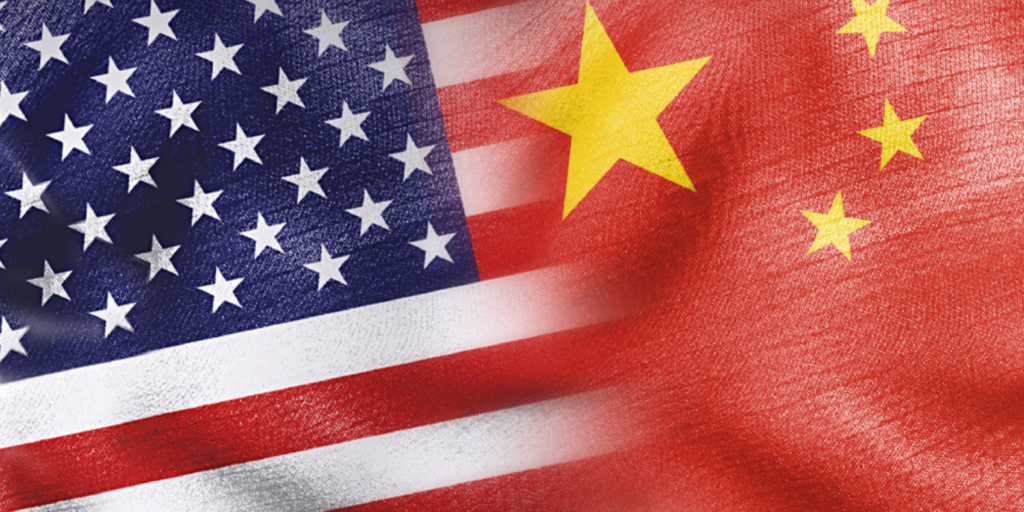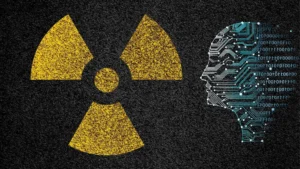TRUMP Between China and US

As 2025 unfolds, global geopolitics witnesses a new chapter with the return of Donald Trump to the White House. His administration is poised to redefine the China-US geo-economic relationship, which has been central to global economic stability and international order. With Trump’s unpredictable policymaking style, his emphasis on “America First,” and a strong focus on reshoring economic power, the dynamics of this relationship are likely to take a contentious turn.
President Trump’s inaugural speech during his second term underscored a recurring theme of protecting American economic sovereignty against perceived unfair practices by China. He reiterated his stance on imposing additional tariffs, emphasizing the need to curtail China’s economic rise, which he argued undermines U.S. interests. Trump’s rhetoric, coupled with policies such as the withdrawal from the Paris Climate Agreement and the World Health Organization (WHO), reflects a neoliberal pivot towards national self-reliance and a rejection of multilateral frameworks. From a Marxist perspective, this relationship can be interpreted as a manifestation of global capitalism’s inherent contradictions.
China’s economic model, which intertwines state and corporate interests, has propelled its rise as the world’s second-largest economy. Its integration into global trade systems, particularly after joining the World Trade Organization in 2001, facilitated its emergence as a critical player in global production chains. However, this growth has often been criticized for fostering exploitative labor practices and exacerbating inequalities within and beyond its borders. U.S. trade policies under Trump—tariffs, sanctions, and restrictions on technology transfers—can be viewed as an attempt to reconfigure these global production relations to benefit American capital while simultaneously addressing domestic discontent over deindustrialization and job losses. Under Trump’s administration, the U.S. sought to reinforce its hegemonic position by framing China as an adversary that violates the norms of fair trade and intellectual property rights. This narrative, disseminated through political speeches and media channels, serves to legitimize aggressive policies aimed at countering China’s influence.
China, on the other hand, has pursued what it terms a “new starting point” in U.S.-China relations, emphasizing principles of mutual respect, peaceful coexistence, and win-win cooperation. This rhetoric aligns with its broader strategy of presenting itself as a champion of globalization and a stabilizing force in an increasingly multipolar world.Subaltern perspectives provide critical insights into how these high-level interactions affect marginalized communities and peripheral nations.
The trade war between the U.S. and China, characterized by tariffs on goods worth hundreds of billions of dollars, has ripple effects on developing economies that depend on these two giants for trade and investment. For instance, supply chain disruptions and shifts out of China have forced smaller economies in Southeast Asia and Africa to adapt rapidly, often at significant social and economic costs. Moreover, the withdrawal of the U.S. from global initiatives like the Paris Agreement and WHO undermines international cooperation on climate change and public health, disproportionately affecting vulnerable populations in the Global South. Neoliberalism, with its emphasis on market liberalization and deregulation, offers another lens to understand U.S.-China relations under Trump.
While Trump’s “America First” policies may seem antithetical to neoliberal ideals, they represent a recalibration rather than a rejection of neoliberalism. By prioritizing American economic interests, Trump’s administration sought to restructure global trade dynamics to favor U.S. firms and investors. This approach aligns with neoliberalism’s core tenet of maximizing market efficiencies, albeit through a protectionist guise.
Robert Cox’s analytical framework, which distinguishes between problem-solving and critical theory, is particularly useful in contextualizing recent developments. Cox argues that problem-solving theory accepts the existing power structures and seeks to manage them, while critical theory interrogates these structures to envision transformative change. Trump’s policies reflect a problem-solving approach, aiming to preserve U.S. dominance within the existing global capitalist framework. In contrast, China’s vision of a “community of shared future for mankind”—as articulated by President Xi Jinping—can be seen as an attempt to reconfigure global governance structures to accommodate its rise and promote a more multipolar order.
Empirically, the data on U.S.-China trade and investment flows underscores the interdependence and tensions characterizing their relationship. In 2023, China was the fourth-largest U.S. goods trading partner, with total trade amounting to $575 billion. U.S. exports to China included high-value goods such as aircraft, semiconductor equipment, and medical devices, while imports primarily consisted of consumer goods and intermediates. However, the overall trade volume declined by 17% compared to 2022, reflecting the impact of the trade war and China’s economic slowdown. Similarly, U.S. foreign direct investment (FDI) in China dropped significantly, from $140 billion in 2019 to just $4 billion in 2023, as firms reassessed their strategies amid rising geopolitical risks and supply chain shifts.
The ideological divergence between the two nations also extends to issues such as climate change and global health governance. Trump’s decision to withdraw the U.S. from the Paris Agreement and WHO signaled a retreat from multilateralism, prompting criticism from Chinese officials. China, in contrast, reaffirmed its commitment to these institutions, emphasizing its role as a responsible global actor. This divergence highlights the competing visions of global leadership: one rooted in unilateralism and national interest, the other in cooperative frameworks and shared responsibilities.
The return of Donald Trump to the White House for a non-consecutive second term adds a new layer of complexity to this bilateral relationship. Ahead of his inauguration, Trump’s conciliatory remarks about President Xi Jinping and the invitation extended to him—though declined—suggest a willingness to reset ties. Chinese officials, including Vice President Han Zheng, expressed optimism about stabilizing relations, emphasizing mutual respect and cooperation. However, underlying tensions persist, as evidenced by Trump’s continued threats of additional tariffs and restrictive measures.
From a theoretical standpoint, the U.S.-China relationship illustrates the interplay of material and ideational forces in shaping global order. Marxist analysis highlights the economic structures underpinning this rivalry, with both nations vying for control over key sectors and technologies. Gramsci’s concept of hegemony sheds light on the ideological battles waged through narratives of fair trade, reciprocity, and global responsibility. Subaltern studies remind us of the peripheral voices often excluded from these high-level negotiations, while neoliberalism underscores the market-driven logic that governs state behavior. Cox’s insights further enrich this analysis by situating the U.S.-China dynamic within the broader context of global capitalism and power relations. His emphasis on the historical structures that shape state behavior invites us to consider how the rise of China’s state-capitalist model challenges the neoliberal orthodoxy long championed by the U.S. This challenge is not merely economic but also ideological, as China positions itself as an alternative to the Western model of development. The U.S.-China relationship under Trump’s administration exemplifies the tensions and contradictions of a rapidly evolving global order. While Trump’s policies reflect an attempt to preserve American dominance, China’s approach emphasizes cooperation and mutual benefit, albeit within a framework that advances its strategic interests. As the world navigates the challenges of the 21st century, the interplay between these two superpowers will continue to shape the contours of international relations, with profound implications for peace, prosperity, and sustainable development.


